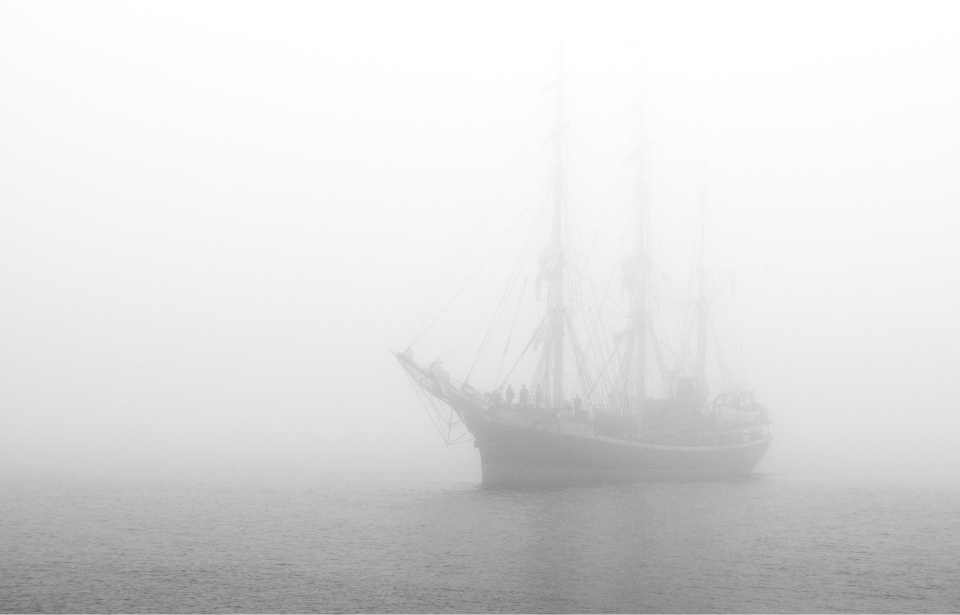The Flying Dutchman is undoubtedly the best-known ghost ship of myth. Said to be an omen of impending doom, it is cursed to sail the seas forever, unable to dock or make land. What if we told you that there were some very real ghost ships with stories just as eerie as this legendary vessel? Some of their crew disappeared with no trace, while others were said to be victims of the paranormal.
SS Valencia
Built in 1882, SS Valencia was a passenger steamer used to transport civilians, and eventually troops, during the Spanish-American War. She was wrecked on January 22, 1906 while sailing off Cape Beale near Vancouver Island, Canada. This area was considered to be particularly treacherous, earning the nickname “Graveyard of the Pacific.” The sinking of Valencia is considered by many to be the worst to happen in the vicinity as 100 people went down with the ship.
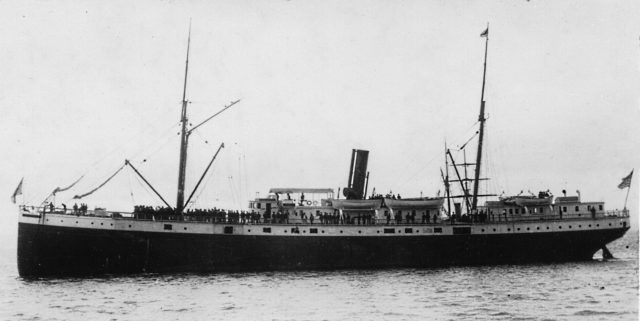
In the years after the wreck, there were many bizarre reports that came out of the area. Some claimed to see a lifeboat with eight skeletons in a nearby cave, while others said they saw various lifeboats being rowed by skeletons from Valencia. It was also frequently reported that sailors saw a mirage of Valencia with waves lapping up the sides while humans held on for dear life. Occasionally this specter would follow other ships along the coast.
SV Mary Celeste
SV Mary Celeste is perhaps one of the most famous ghost ships ever. She served as the inspiration for Arthur Conan Doyle’s short story, “J. Habakuk Jephson’s Statement,” only adding to her fame.
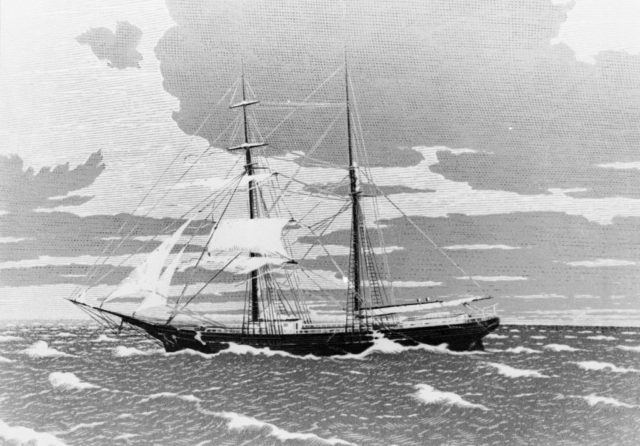
The ship was abandoned 29 days into a trip from New York City to Genoa, Italy. She had been manned by Captain Benjamin Brigg and a crew of seven, along with Briggs’ wife and daughter. The last log entry was dated November 25, 1872, after passing by Santa Maria Island in the Azores, and nothing was noted amiss.
When she was found adrift on December 4, 1872, the lifeboat was missing and it looked like the passengers and crew left the ship in an orderly way. Even more mysterious was that the ship was intact and the sails were up, although some of them had sustained some heavy wear, and she was traveling toward the Strait of Gibraltar. Many theories have been proposed on what happened to the people onboard, including foul play, being hit by a waterspout, or other natural phenomena forcing abandonment.
SS Baychimo
Despite being designed for travel in frigid Alaskan waters, SS Baychimo reached her demise when she became trapped in solid ice near Barrow, United States. Solid, some reports say that the crew decided that they would abandon ship temporarily, and return when they were able, while others say that the crew thought she was destined to sink. Either way, Baychimo managed to break the moorings and sail away.
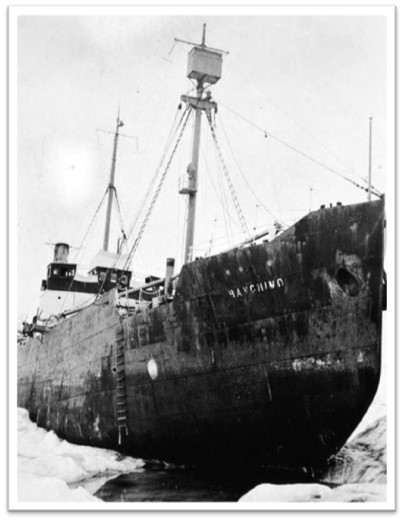
Unlike many ghost ships that are tracked down in a few years, Baychimo sailed the seas for decades before she finally disappeared. She would periodically appear over the years before vanishing again. It is believed that the last reported sighting of her sailing was in March 1962, and the last ever sighting was when she was yet again trapped in ice in 1969. As she hasn’t been seen again since, it’s assumed that Baychimo finally sunk.
SV Carroll A. Deering
SV Carroll A. Deering was launched on April 4, 1919, only to go on her last voyage on July 19, 1920. Captained by world-renowned First World War hero William H. Merritt, she set off to Rio de Janeiro with a large coal shipment. By the time she reached the Virginia Capes, Merritt had fallen ill and was replaced by Captain Willis B. Wormell and First Mate Charles B. McLellan.
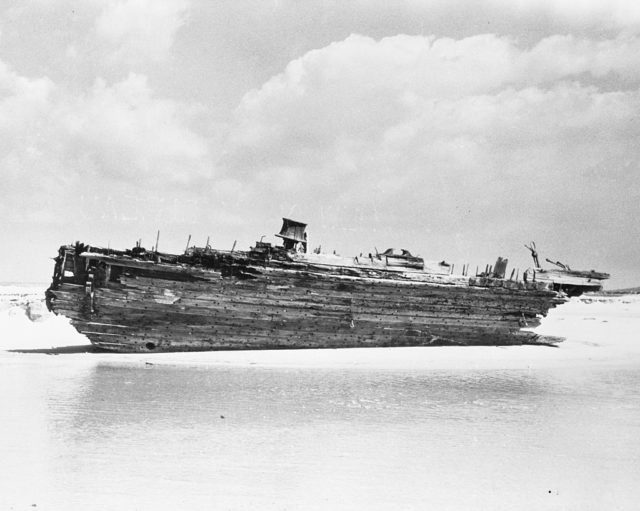
The delivery was made to Brazil with little difficulty, but as the crew passed through various ports afterward it became clear that all was not well on the ship. Reports were made that McLellan was a habitual drunk who mistreated the crew. Another sailor reportedly heard McLellan say, “I’ll get the captain before we get to Norfolk; I will.” They went back to sea and on January 28, 1921 alerted the Cape Lookout Lightship that they had lost both their anchors.
Only three days after that, Carroll A. Deering was found run ashore on the Diamond Shoals with all the lifeboats and logbooks missing. Although the disappearance of the crew was investigated, there were no conclusive explanations made as to where they went. Some have theorized that the conflict between captain and first mate came to a head, others think they were the victims of piracy, and some have gone so far as to say it was something paranormal.
MV Joyita
MV Joyita served during the Second World War before being purchased as a private trading and fishing charter. She went on her final voyage on October 3, 1955, carrying 16 crew, nine passengers, and extensive cargo. The voyage, leaving from Apia Harbor and traveling to the Tokelau Islands, was only supposed to take two days, but she was found five weeks later partially submerged. Four tons of cargo were unaccounted for and all the crew and passengers were missing.
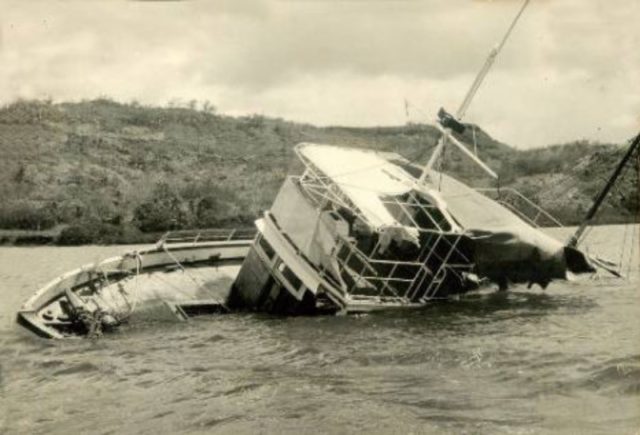
Apart from the radio being tuned to the international distress channel, there was little evidence of what had happened. There were, however, missing firearms, as well as a doctor’s bag with bloody bandages open on the deck. While there have been some eccentric explanations for the disappearance, including kidnapping by the Soviet Union, the real explanation is likely more simple.
Joyita likely started taking on water, and everyone on board was put into the lifeboats. When a rescue never happened, it’s probable that they drowned or were killed by sharks.
HMS Resolute
HMS Resolute wasn’t always meant for Arctic exploration. Once a sea-going vessel, she was a British Royal Navy ship that was retrofitted for a big task when Sir John Franklin and his crew never returned from their search for the North West Passage. One of many ships sent to investigate the disappearance, Resolute was the flagship under the command of Horatio Thomas Austin. The crew successfully found evidence of Franklin’s camp on Beechey Island before returning to England.
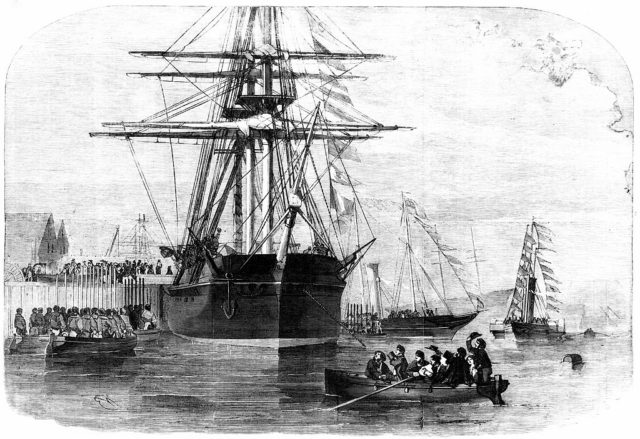
Resolute was reassigned to the command of Sir Edward Belcher, still tasked with investigating what happened to the Franklin Expedition. This mission was disastrous. On May 15, 1854, the crew was forced to abandon ship after she was trapped in a field of ice in Viscount Melville Sound, Canada. It wasn’t until September 10, 1855, that Resolute was found abandoned on the coast of Baffin Island, Canada, having drifted through the open waters after the ice melted.
The captain’s cabin was “undisturbed with a teapot, bible and glasses full of liquor on the desk.” The crew was never seen or heard from again.
More from us: The True Story Behind the Costa Concordia Shipwreck
While the ship may have been largely forgotten, she was remade into something unique. The Resolute desk, which still sits in the Oval Office, was given to Rutherford B. Hayes by the British government in 1880.
